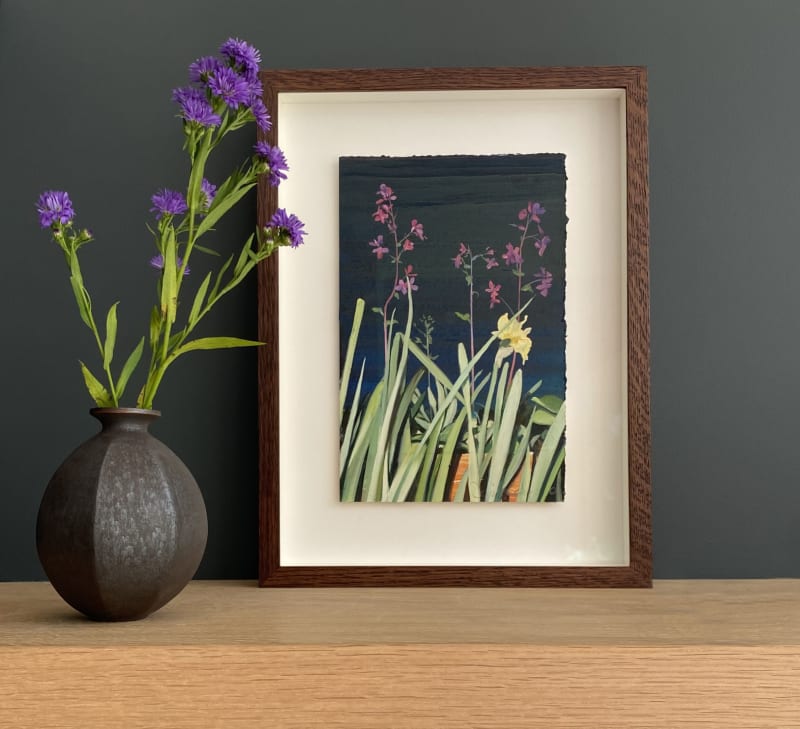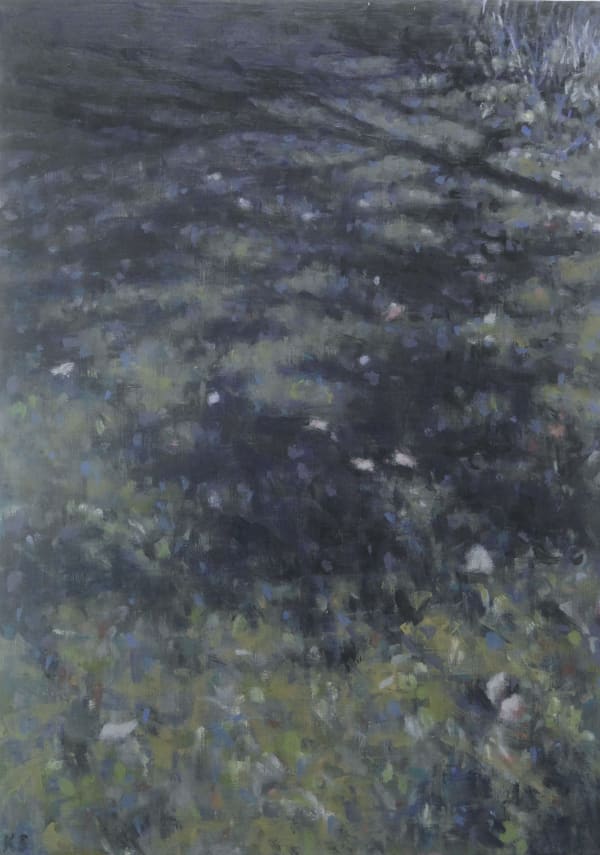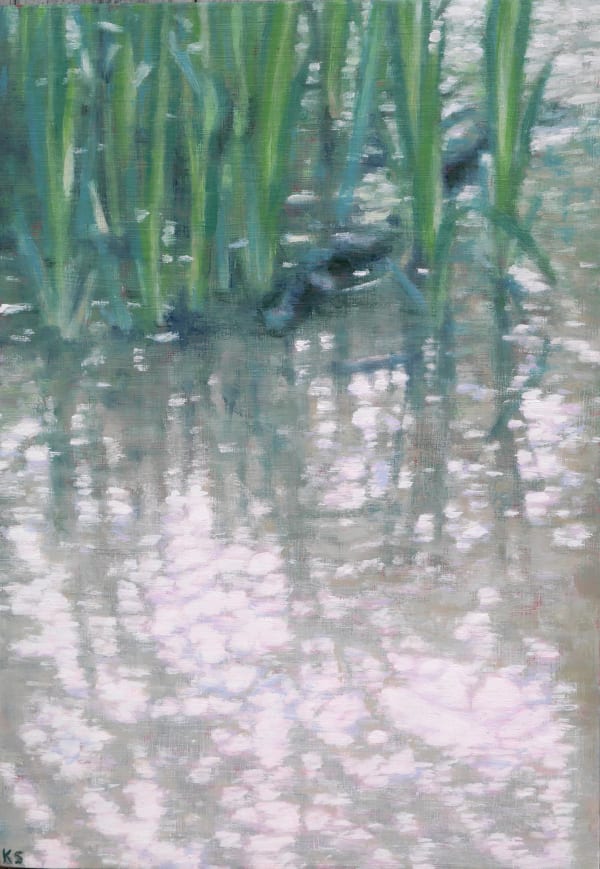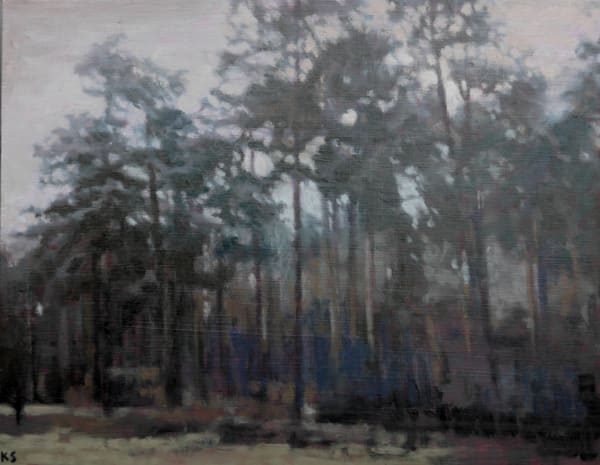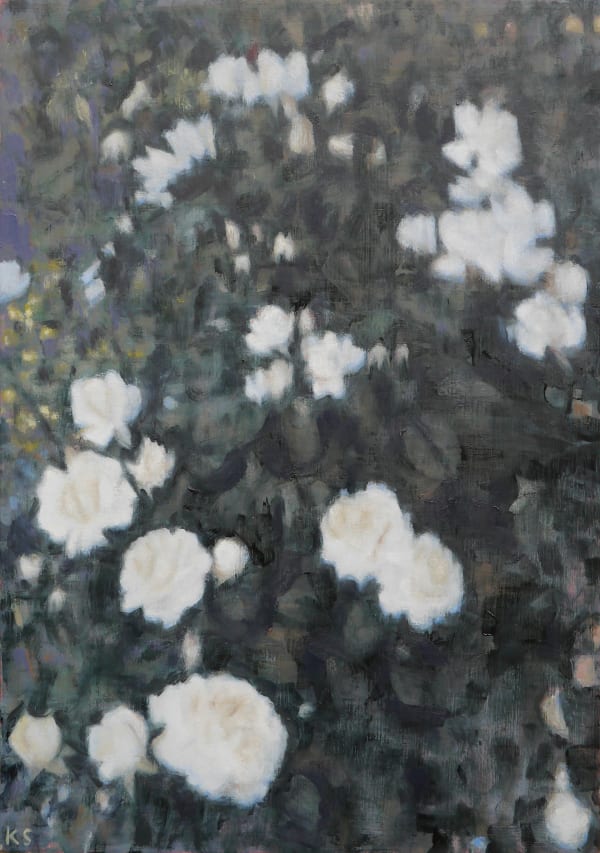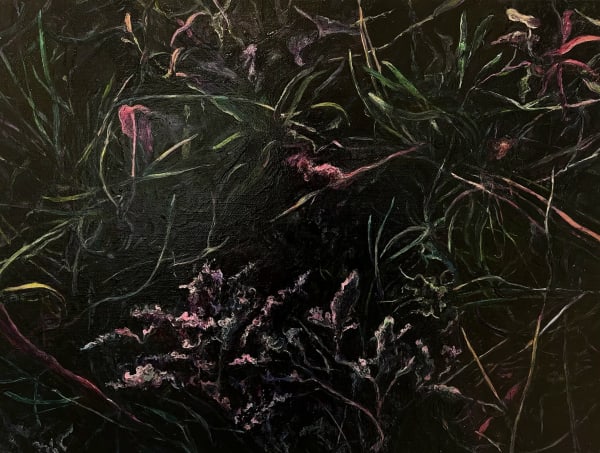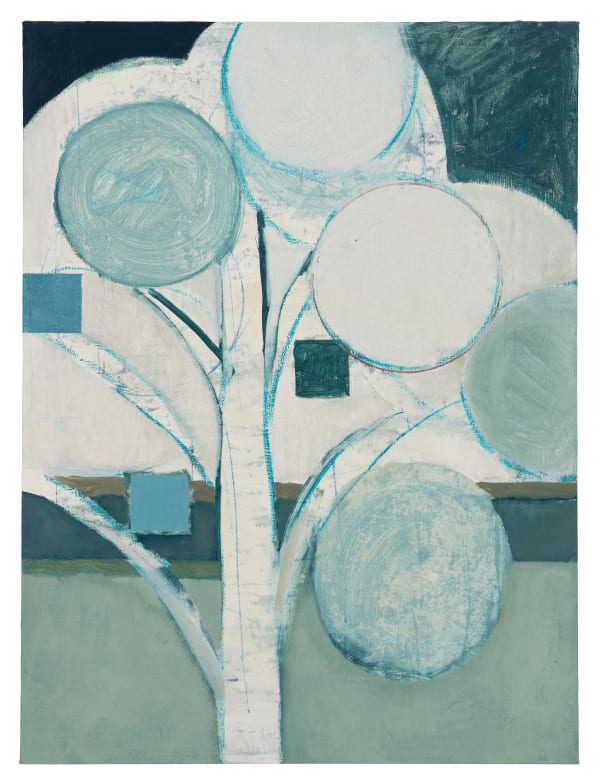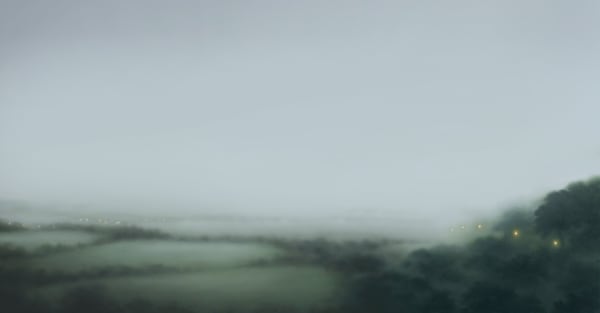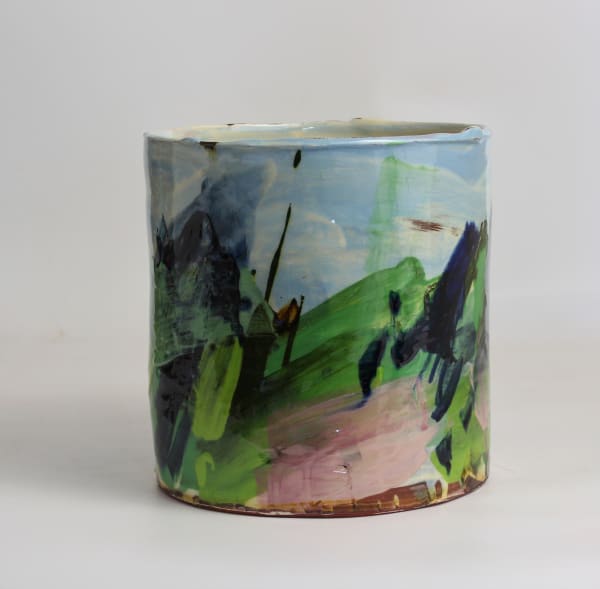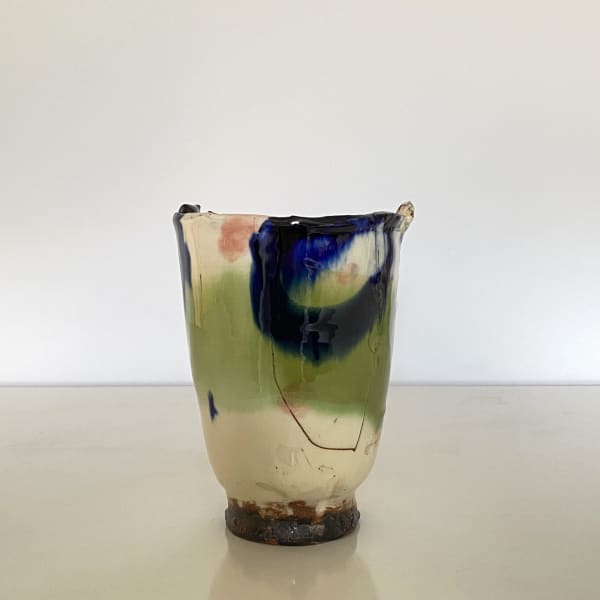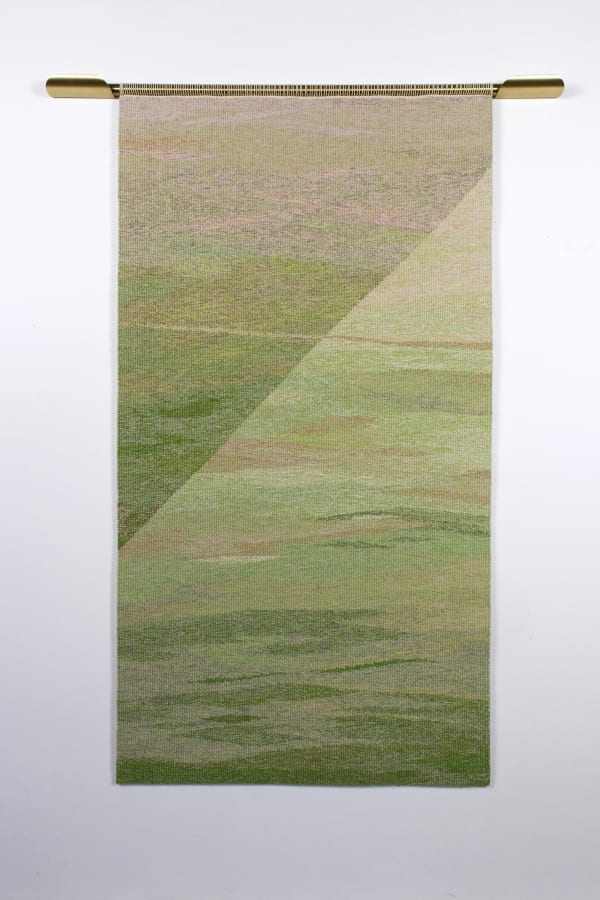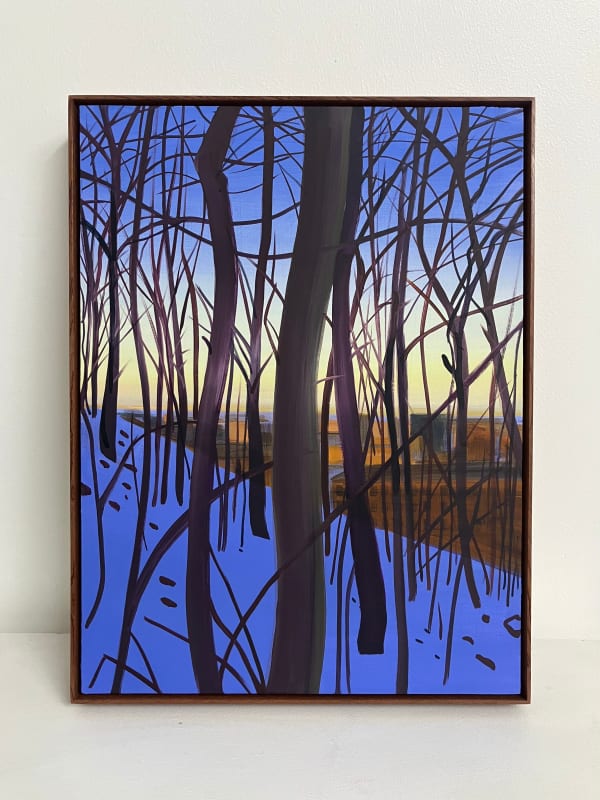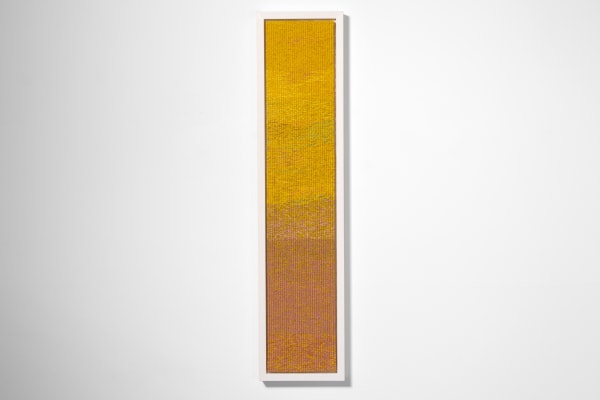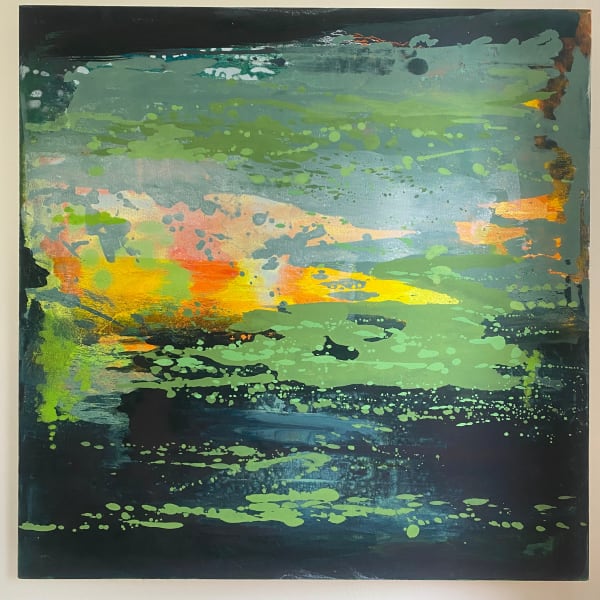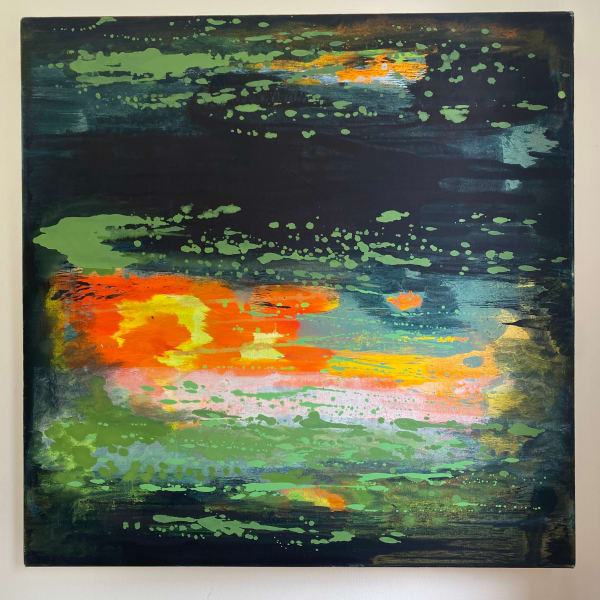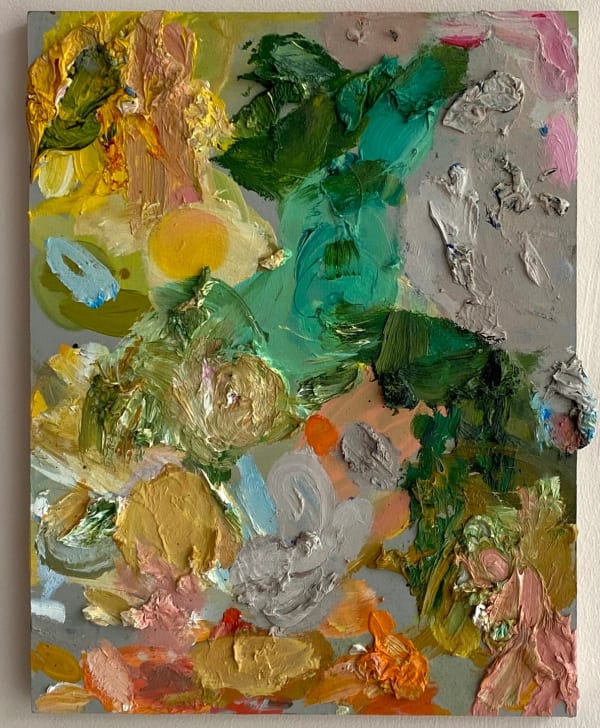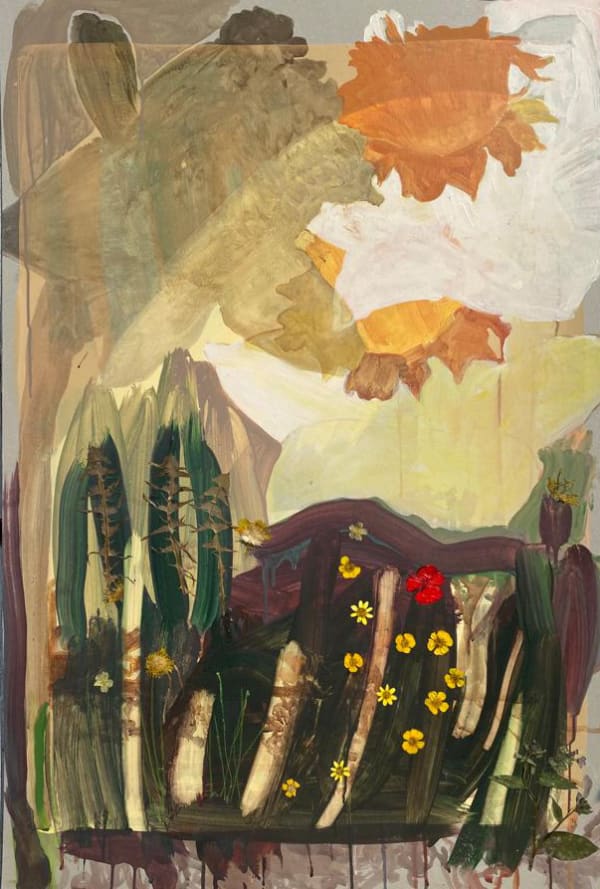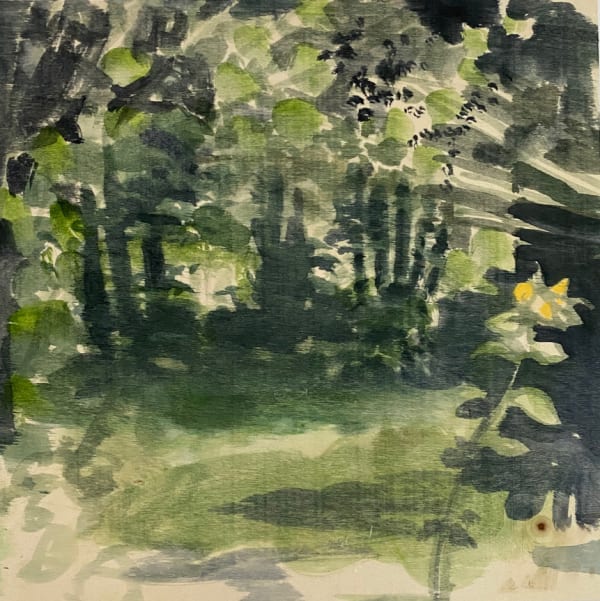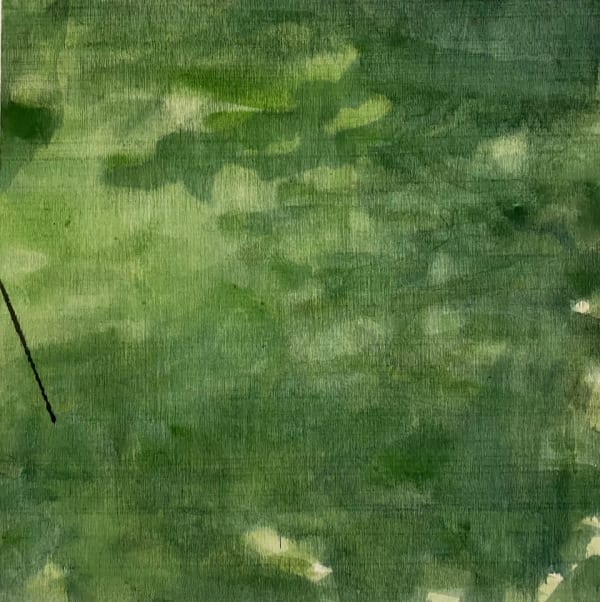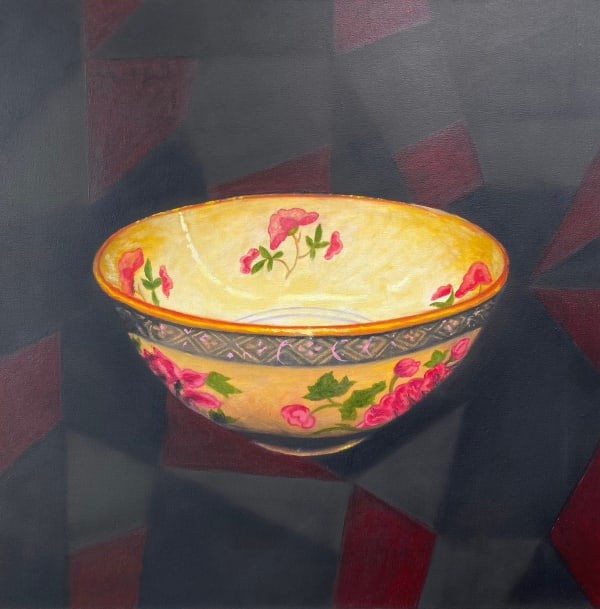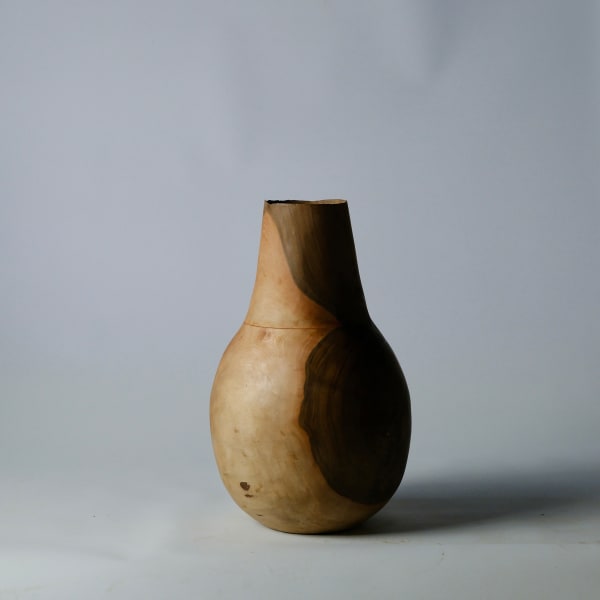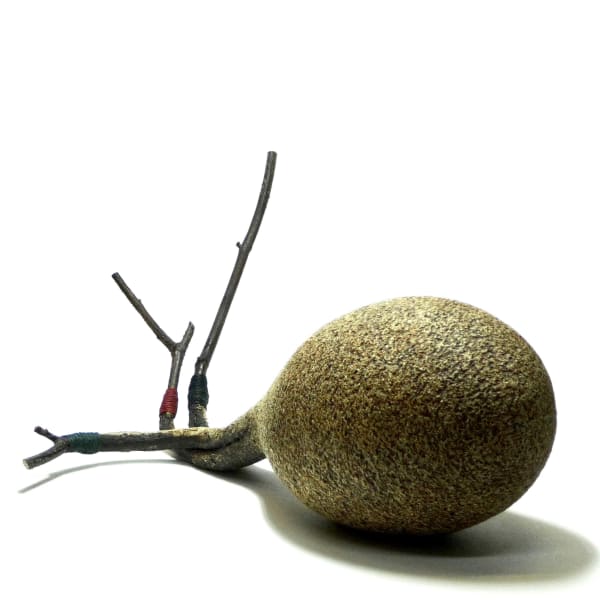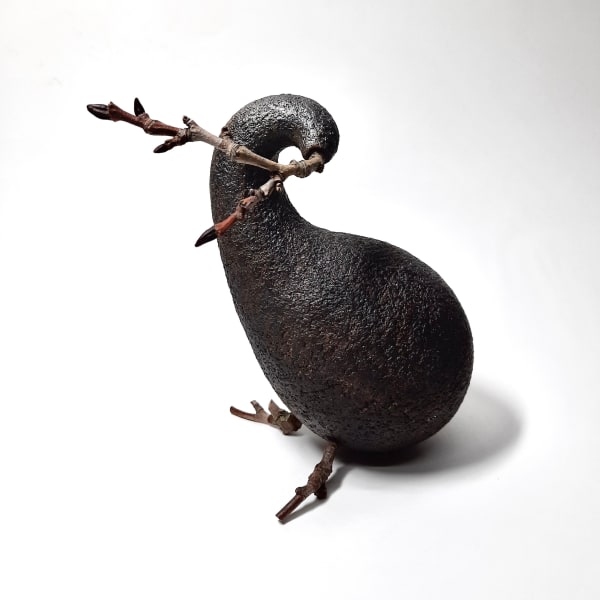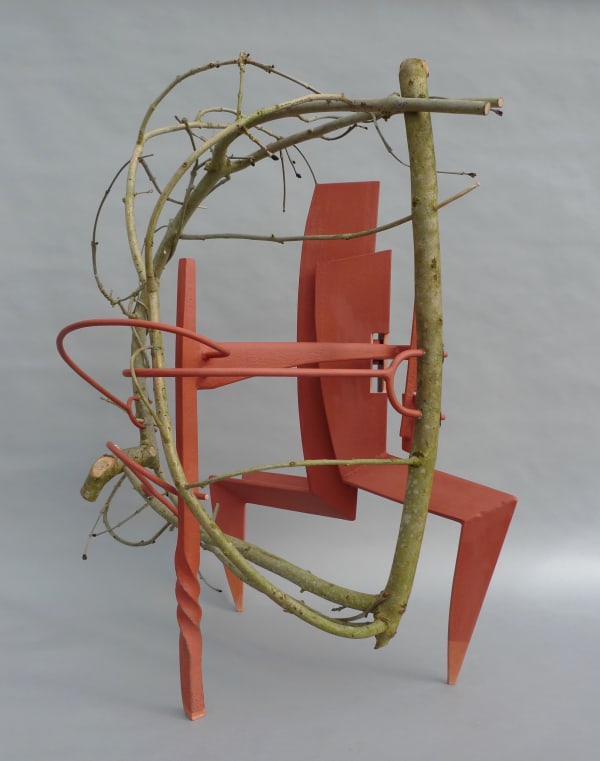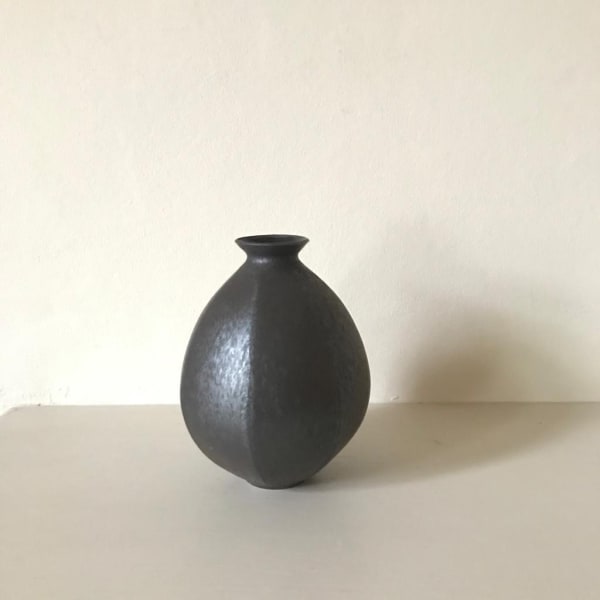Overview
Artists have sought to capture the ephemeral nature of flowers and plant life for centuries. Whether painting roses, irises, trees, wildflowers, branches, or wilting flowers each artist brings their own unique style to the work.
There's nothing like seeing bursts of nature at different times of the year to stir the emotions, yet as well as offering us this timeless sense of joy, there's a sadness too for its transcience connects us to life and death. It is this duality that makes nature such an interesting source of inspiration for artists.
In our online show, Flora Majestica we celebrate nature's summer symphony featuring work by artists who draw inspiration from gardens, night flowers, wildflowers, forests, and trees in a variety of mixed media.
Read our press release for more information about each artist's work in the show.
Installation Views
Works
-
 David Edmond, Flora A7, 2022£ 1,000.00
David Edmond, Flora A7, 2022£ 1,000.00 -
 David Edmond, Flora A15, 2022£ 2,400.00
David Edmond, Flora A15, 2022£ 2,400.00 -
 David Edmond, Flora A16, 2022£ 2,400.00
David Edmond, Flora A16, 2022£ 2,400.00 -
 David Edmond, Flora A5, 2022£ 1,000.00
David Edmond, Flora A5, 2022£ 1,000.00
-
 David Edmond, Flora A6, 2022£ 1,000.00
David Edmond, Flora A6, 2022£ 1,000.00 -
 David Edmond, Flora A10, 2022£ 2,400.00
David Edmond, Flora A10, 2022£ 2,400.00 -
 David Edmond, Flora A9, 2022£ 2,400.00
David Edmond, Flora A9, 2022£ 2,400.00 -
 Kate Sherman, Lawn 1, 2021£ 990.00
Kate Sherman, Lawn 1, 2021£ 990.00
-
 Kate Sherman, Night Shadows 2, 2022 Reserved
Kate Sherman, Night Shadows 2, 2022 Reserved -
 Kate Sherman, Pond 2, 2022£ 990.00
Kate Sherman, Pond 2, 2022£ 990.00 -
 Kate Sherman, Pines, 2021 Sold
Kate Sherman, Pines, 2021 Sold -
 Kate Sherman, Forest 4, 2020£ 880.00
Kate Sherman, Forest 4, 2020£ 880.00
-
 Kate Sherman, Rose Garden Dusk 3, 2022 Reserved
Kate Sherman, Rose Garden Dusk 3, 2022 Reserved -
 Kate Sherman, Rose Garden Dusk 4, 2022£ 990.00
Kate Sherman, Rose Garden Dusk 4, 2022£ 990.00 -
 Judith Tucker, Dark Marsh Winter Pool, 2021
Judith Tucker, Dark Marsh Winter Pool, 2021 -
 Daisy Cook, Spring Tree, 2024£ 5,500.00
Daisy Cook, Spring Tree, 2024£ 5,500.00
-
 Tim Martin, Mint Cloud Tree, 2023£ 960.00
Tim Martin, Mint Cloud Tree, 2023£ 960.00 -
 Gill Rocca, Once upon a time, 2018 Sold
Gill Rocca, Once upon a time, 2018 Sold -
 Barry Stedman, Thrown Vessel 9465, 2023£ 430.00
Barry Stedman, Thrown Vessel 9465, 2023£ 430.00 -
 Barry Stedman, Thrown Altered Vessel 7059 , 2020£ 210.00
Barry Stedman, Thrown Altered Vessel 7059 , 2020£ 210.00
-
 Barry Stedman, Thrown Altered Vessel 7055, 2020£ 210.00
Barry Stedman, Thrown Altered Vessel 7055, 2020£ 210.00 -
 Barry Stedman, Thrown Altered Vessel 7045, 2020 Sold
Barry Stedman, Thrown Altered Vessel 7045, 2020 Sold -
 Barry Stedman, Thrown Altered Vessel 7042, 2020£ 145.00
Barry Stedman, Thrown Altered Vessel 7042, 2020£ 145.00 -
 Katharine Swailes, Summer Verdure , 2023£ 12,000.00
Katharine Swailes, Summer Verdure , 2023£ 12,000.00
-
 Catherine Knight, Ekeberg, , 2022£ 795.00
Catherine Knight, Ekeberg, , 2022£ 795.00 -
 Katharine Swailes, Colourfield Warm Harmonies - Strong Yellow, 2022£ 1,550.00
Katharine Swailes, Colourfield Warm Harmonies - Strong Yellow, 2022£ 1,550.00 -
 Rebecca McLynn, Heath 1, 2022£ 2,530.00
Rebecca McLynn, Heath 1, 2022£ 2,530.00 -
 Rebecca McLynn, Heath 2, 2022£ 2,530.00
Rebecca McLynn, Heath 2, 2022£ 2,530.00
-
 Mia Cavaliero, On Frozen Ground, 2023£ 440.00
Mia Cavaliero, On Frozen Ground, 2023£ 440.00 -
 Helen Ballardie, Sunflower, 2021£ 990.00
Helen Ballardie, Sunflower, 2021£ 990.00 -
 Helen Ballardie, Santa Monica, 2021£ 990.00
Helen Ballardie, Santa Monica, 2021£ 990.00 -
 Helen Ballardie, Daffodils, 2021£ 2,810.00
Helen Ballardie, Daffodils, 2021£ 2,810.00
-
 Helen Ballardie, View in the Garden, 2021£ 990.00
Helen Ballardie, View in the Garden, 2021£ 990.00 -
 Helen Ballardie, Front Lawn, 2021£ 990.00
Helen Ballardie, Front Lawn, 2021£ 990.00 -
 Helen Ballardie, Night Daisies I, 2020£ 970.00
Helen Ballardie, Night Daisies I, 2020£ 970.00 -
 Helen Ballardie, Night Daisies II, 2020£ 970.00
Helen Ballardie, Night Daisies II, 2020£ 970.00
-
 Alison Griffin, When I Think I May Fall Apart (Visions Of A Golden Age VI) , 2024£ 495.00
Alison Griffin, When I Think I May Fall Apart (Visions Of A Golden Age VI) , 2024£ 495.00 -
 Alison Griffin, The Unbearable Persistence Of Longing, 2024
Alison Griffin, The Unbearable Persistence Of Longing, 2024 -
 Tony Beaver, Flower Bowl, 2022£ 1,980.00
Tony Beaver, Flower Bowl, 2022£ 1,980.00 -
 Robert George, Bowl 1 - 1/23, 2023£ 1,200.00
Robert George, Bowl 1 - 1/23, 2023£ 1,200.00
Press release
Artists have sought to capture the ephemeral nature of flowers and plant life for centuries. Whether painting roses, irises, trees, wildflowers, branches, or wilting flowers each artist brings their own unique style to the work.
There's nothing like seeing bursts of nature at different times of the year to stir the emotions, yet as well as offering us this timeless sense of joy, there's a sadness too for its transcience connects us to life and death. It is this duality that makes nature such an interesting source of inspiration for artists.
In our online show, Flora Majestica we celebrate nature's summer symphony featuring work by artists who draw inspiration from gardens, night flowers, wildflowers, forests, and trees in a variety of mixed media.
Painters David Edmond and Kate Sherman seek to capture nature in different lights. David Edmond's Flora paintings are based on his flashlight photography. The subjects are common and random wild plants like those Albrecht Dürer painted in his 'Das große Rasenstück' (the Great Piece of Turf). The shock intervention of bright artificial light on nature speaks of our contemporary man-made environment.
Kate Sherman paints flower beds at dusk, their violet and white blooms glistening in the golden light. She captures the essence of these moments during the last light of day - a snapshot of a rose bush, garden or forest of pines infused in weakened sunlight. This feeling of transcience is heightened by her painting style, slightly ablur, as if taken from a passing car.
The late Judith Tucker also cites Dürer as an influence citing his 'Great Piece of Turf' as one of her favourite artworks, among many. The painting Dark Marsh Winter Pool considers the pioneering salt marsh plants of the Humberston Fitties, on the borders of Tetney Marsh so, at one level, the relationship is simply geographical. Judith was drawn to these plants visually, but also in terms of their ecological niche. They are both vulnerable to sea-level rise, but also help to protect the land from flooding, so raise many questions about saltmarsh and coastal erosion. The work was intended to be seen in relation to her Night Fitties series. Together, the two series explore human and more-than-human worlds in microcosm and juxtaposition, touching on the play of light, tide and colour, uncanny transformations after dark, and notions of vulnerability, occupation, resilience, and reclamation.
In Alison Griffin's detailed pencil drawings - what first appears as a rural idyll is peppered with signs of the impact of man's intervention in nature, with visible telephone wires criss-crossing the clear sky infused with yellow, a colour that often suggests a warning of impending threat.
Tim Martin's ceramic sculptures and Daisy Cook's paintings both distill landscapes and natural objects to their simplest forms. They aim to push an emotional response - a memory, an exotic garden, a hint of something familiar, yet enigmatic, ambiguous.
Some artists work instinctively according to the seasons, ceramicist and painter Barry Stedman's palette changes from month to month as he watches the gardens around him spring to life.
Textile artist Katharine Swailes weaves abstract landscapes inspired by the colours she observes around her, Rebecca Mclynn paints her local heathland imbued with strong colours combining pigments to literally bring a warm almost sparkling glow to the canvas as she pours her colours on from above, layer upon layer.
Mia Cavaliero has observed how flowers survive in the harshest conditions and was fascinated by how the plants in her garden continued to produce intense colour right up until they were covered in snow. The plants struggled to sustain themselves against the weight of the snow and finally surrendered this battle to the ensuing frost. Observing this from her studio, she made the small painting 'On frozen ground' in acrylic and mixed media.
After a life-long fascination with Edvard Munch's paintings, Catherine Knight made the pilgrimage to Oslo to fulfil her dream of seeing Munch's paintings in the flesh and to visit his tiny summer house in Åsgårdstrand. She was transfixed by the quality of light on the island and painted a series of works following her visit that were shown in her solo show at the Petersfield Museum last year.
Helen Ballardie takes joy from having her very first garden. Situated in Northern France she paints 'en plein air' capturing those distinctive shadows and flowers in the morning and evening light. We see the garden afresh through her eyes in her paintings of daisies at night and the shadows on the lawn at dusk and what she sees is sometimes totally abstracted back to pure colour.
Floral design was particularly important in the Victorian period and Tony Beaver in his Bowl series featured below has captured a Victorian bowl isolated from its original context floating within an abstracted chequered background. Flowers held significant meaning to the Victorians and enabled them to convey secret messages through floral communication. At this time, social convention imposed severe restrictions on what could be expressed directly, so people used flowers to flirt and send secret messages.
In some cases, the artists source their materials from the outside world including Robert George who creates these English Walnut vessels turned from a wind blown tree from Naseby in Northamptonshire. Robert utilises timber sourced from his own carefully considered arboricultural practices and sustainable small-scale forestry operations, all from within a 30mile radius of his workshop. He seeks to create forms and furniture that reflect on his experiences and knowledge of trees.
In her Transplant series, sculptor Danuta Solowiej uses oxides and waxed string incorporating real twigs to create balance and tension. Danuta explores the notion of fixing and fitting using ceramics and organic matter in a manner loosely based on gardening manuals. These fictional scenarios are in part playful musings on grafting and in part a metaphor for displacement and the want to fit into a new habitat.
Simon Gaiger has also incorporated a branch in his sculpture Trigger's Broom, sourcing materials from around his farm in wales he transforms found objects into vivid sometimes playful and interactive sculptures with a witty play on words in his titles. The landscape plays a big part on his work in wood and metal.
Nature is a constant source to artists feeding us with new vistas on a daily basis.
